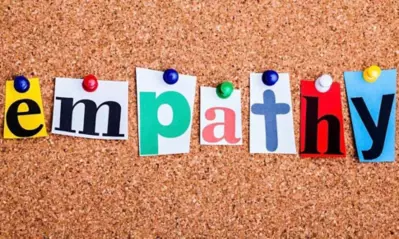How quality leadership can leverage coaching

Written by Jessica Roper, MBA

How to be a leader
In any type of leadership position, individuals are bound to encounter complexity, tough choices and change. Effective leaders must be adaptable and ready to steer their teams in the right direction while also nurturing and supporting growth. Embracing a coaching approach can help you achieve both of these goals. It provides a dependable strategy for handling various shifts and challenges while encouraging employees to actively engage in their own personal development journey.
Coaching and leadership skills
A quick internet search on “leadership” quickly goes down a rabbit hole of definitions, articles and books. But at its core, leadership means guiding and inspiring others toward a shared goal.
Leadership roles across industries and organizations differ in day-to-day tasks and objectives, but at its core, quality leadership always encompasses clear communication, empathy, honesty, adaptability and integrity.
How does coaching fit into leadership?
As defined by the globally recognized International Coaching Federation , coaching is “partnering with clients in a thought-provoking and creative process that inspires them to maximize their personal and professional potential
.”
Coaching, like leadership, involves partnering to help someone reach their goals. In the workplace, however, the role of coaching often goes beyond specific goals and provides a means to improve performance, develop skill sets and grow personally and professionally.
Simply put, coaching and leadership work together by aligning guidance and support with personal and professional growth. Effective leaders use coaching to empower their employees, cultivating their development and driving performance.
How coaching can improve outcomes
Coaching allows individuals to identify both short- and long-term goals, providing a pathway for you and your employees to focus on achieving those milestones together.
The advantage that coaching specifically offers is that it empowers individuals by involving them in the process, which can lead to increased self-confidence and self-efficacy. This practice isn’t just theoretical. Research indicates that participants who undergo developmental coaching display higher levels of self-efficacy , a pivotal factor for career progression and sustained personal and professional development.
Furthermore, integrating coaching into your leadership tool kit yields rewards for you as well. Embracing a coaching role sharpens vital leadership traits, such as communication, empathy and adaptability. Coaching puts you in the position of being an influential mentor, and it underscores your investment in your team’s development and success. This commitment contributes to improved employee satisfaction and retention, and it builds stronger, more cohesive teams.
4 steps for implementing a coaching approach
There are numerous coaching frameworks out there, each with its own strategies and techniques. You can think of them as recipe cards guiding coaching conversations. Much like skilled chefs who blend various techniques and ingredients, coaches customize different methods and tools to align with an individual’s needs.
Here are some universally applicable coaching elements that span frameworks and can be customized and implemented according to your circumstances.
1. Practice active listening
At first, this might seem like common sense, but active listening goes beyond just hearing. It requires giving your full and undivided attention.
To do this, you may need to create a quiet environment with no distractions, like pinging phones or other interruptions. Allow enough time for the conversation, and use verbal and nonverbal cues like eye contact, smiling, nodding and affirming phrases like, “Go on” and “I see.” Also, paraphrase or summarize what you hear to ensure your understanding.
2. Ask powerful questions that encourage self-reflection
Pose open-ended questions that invite your employee to explore thoughts, aspirations and challenges.
It is a good idea to have a few questions ready before the meeting to get the conversation flowing. From there, your active listening will enable you to ask clarifying and follow-up questions throughout the conversation.
3. Collaborate on creating goals and action plans
Use insights from your employee’s reflection to collaborate on defining goals. It is important to engage them in this process, so encourage them to take the reins and define their next steps and action plans.
The SMART strategy for developing goals (specific, measurable, achievable, relevant and time-bound) can help guide you.
4. Provide feedback and accountability
Once a goal is defined, it’s crucial to provide consistent feedback that acknowledges the employee’s efforts and highlights areas for improvement. This ongoing dialogue not only fuels growth but also fosters a sense of trust and continuous improvement. Establish specific times when your employees can reflect on their progress and you can reinforce your commitment to their development.
Putting coaching into action: A real-life example
Let’s explore a real-life scenario that demonstrates coaching in action.
Imagine you’re a manager at a tech company and oversee a promising employee named Ryan. He has great technical skills but is hesitant in meetings and reluctant to take on additional tasks. You’ve identified a potential lack of confidence.
As the leader, it’s your role to approach Ryan. Given your understanding of the situation, it might be tempting to take a direct approach, advising Ryan to become more vocal during meetings and to assume more responsibilities to enhance his confidence and demonstrate his capabilities.
While this approach has good intent, it assumes the leader knows what the problem is and how to fix it and does not involve any collaboration or input from Ryan. This can lead to an environment ripe for defensiveness, miscommunication and misaligned goals.
Instead, consider how coaching techniques like powerful questioning, self-reflection and collaborative goal-setting could transform the conversation.
“Ryan, I’ve noticed that you’re not engaging in meetings, you’re showing hesitancy in areas where you have ample knowledge, and you’re passing up new opportunities presented to you. With the aim of supporting your growth, I’m interested in learning more about your perspective and how you’re feeling at work. This might involve me asking you some questions to grasp the situation better, and then, collaboratively, we can set goals to enhance your performance. How does that sound to you?”
In this approach, collaboration takes center stage. Rather than dictating what Ryan should do, you’re using coaching dialogue and even seeking his permission, which creates a safe and open space for him to share.
Coaching empowers individuals by involving them in the process, which can lead to increased self-confidence and self-efficacy.

Once you gain Ryan’s agreement to a coaching conversation, you can pose open-ended questions to better understand the situation and encourage him to reflect:
- What situations do you find challenging when working with others? Could you describe your thoughts in those instances?
- What aspects of your job excite you, and which ones cause uncertainty or hesitation? Why do you think that is?
- How do you think boosting your confidence could impact your career positively?
Once you have a clear understanding of the situation, you can define goals together with Ryan.
For instance, if you discover it is in fact a lack of self-confidence that’s affecting his performance, you might ask, “What’s one step you can take to enhance your self-confidence?”
Use the response to craft a goal, such as:
Ryan will take the lead on the software-upgrade project. Over the next six months, he’ll contribute to team meetings by sharing progress and obstacles. He will pinpoint ideas before the meeting to feel more confident when sharing. We’ll have biweekly follow-up sessions to reflect on his goal progress and track his advancement.”
This goal follows the SMART criteria, making it specific, measurable, achievable, relevant and time-bound, ensuring a clear and achievable pathway for Ryan’s growth and inviting the opportunity for additional coaching conversations during his progress meetings.
Remember: Although coaching is a powerful tool, it isn’t a one-time fix. Instead, it represents an ongoing journey. The most effective coaches are willing to jump in, learn and adapt. Different individuals require different approaches, and sometimes it takes trial and error to learn what works.
Coaching does not require perfection, but it does require a partnership built on honesty, communication and trust. And, as with any skill, the more you practice coaching, the more proficient and impactful you’ll become as a leader.
Career resources at University of Phoenix
Quality leadership is just one part of a career journey. Explore a variety of additional resources at UOPX, including:
- Career Services for Life®: Available to UOPX students and graduates, this offering comprises complimentary career coaching, including guidance on how to build a personal brand and write a resumé.
- Free career resources: Browse a range of downloadable guides and templates to help you optimize your LinkedIn® profile, get ready for a job interview and write a resumé and cover letter.
- Career With Confidence® newsletter: Get career insights every week via UOPX’s LinkedIn newsletter.

ABOUT THE AUTHOR
Jessica Roper, University of Phoenix director of Career Services, is a seasoned leader with over 15 years of experience in leadership within higher education. She has honed her expertise in student services and career development and is passionate about helping others discover and refine their skills.
This article has been vetted by University of Phoenix's editorial advisory committee.
Read more about our editorial process.
Read more articles like this:


